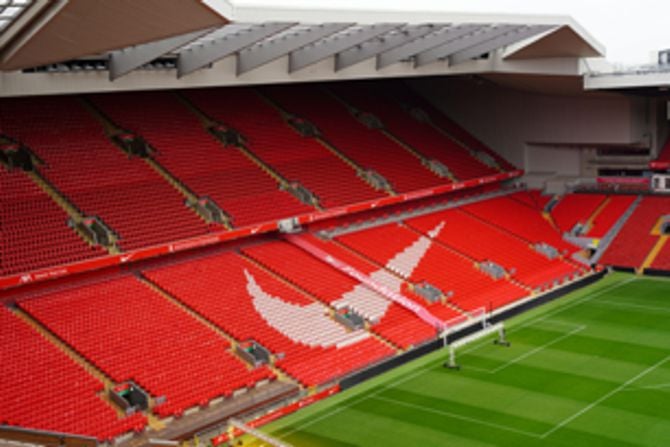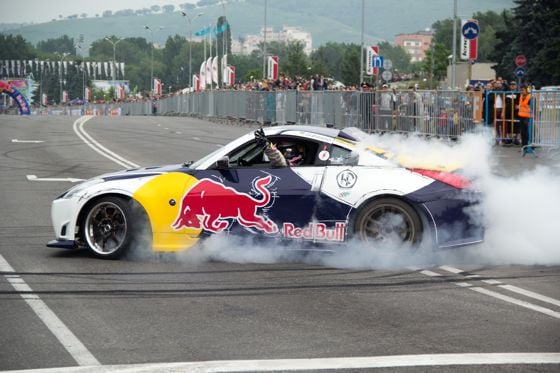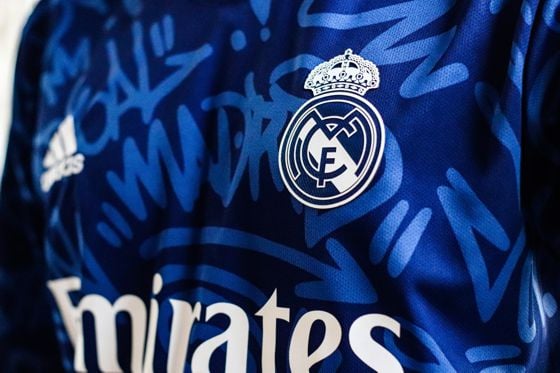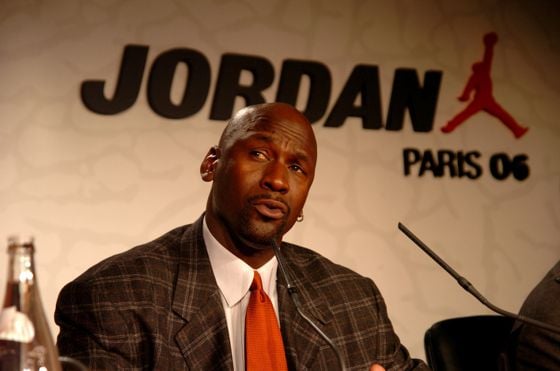The Power of Corporate Identity in Sports Sponsorship:
More Than Just a Logo

Come 2025, sponsorships are everywhere in sport. Global giants like American Express and Coca-Cola dominate the biggest stages, whilst on a grassroots level, you can find anything from local car dealerships to supermarket chains whose logos now appear on the kits of even the smallest teams.
Of course, there’s a little more to it than just having a logo embroidered on the front of the shirt. It’s a way for brands to align themselves with the passion, loyalty, and cultural influence of sport. It's why companies strive to get their brand associated with a major franchise.
Aligning Values for an Authentic Impact
Recent research into sports sponsorship shows that it’s important that brands fit with the sport or club they decide to back with their marketing dollars. The ‘more than just a logo’ mantra works in both directions, therefore.
Simply placing a logo on a customized football shirt, even the best-looking one, won’t guarantee results. The real impact comes from finding the right fit between brand and sport, where the partnership feels natural from the start.
That’s why the most effective sponsorships are built on shared values. Outdoor brands naturally resonate with cycling teams, while eco-conscious companies align more convincingly with sailing than with F1 racing. When the connection feels genuine, fans accept it instinctively.
When the alignment in values isn’t there, it’s obvious. When you can’t build a bridge that looks natural, sponsorships will be seen as opportunistic ventures, or just far too commercial and fake. For sports sponsorship deals, companies are having to think deeply about their partnerships, going beyond logos.
Sports, Interrupted?
Sponsorship in sport isn’t like conventional advertising, which is designed to interrupt. You’re watching YouTube or, whelp, cable television, when your viewing pleasure is jarringly cut short by a commercial.
It’s incredibly irritating, especially now that we’re used to ad-free platforms like Netflix. Our attention spans aren’t what they used to be, and doom-scrolling has made us impatient with even the smallest disruption.
Brand partnerships in sport work differently. The most successful campaigns embed themselves seamlessly into the identity of a team or club, so that brand and sport reinforce each other. Ideally, it’s a win–win relationship.
The strongest collaborations aim for the all-important built-in narrative – a sporting story that naturally places the brand at the center without forcing it. Sport by its very nature provides compelling storylines: teamwork, perseverance, beating the odds, and staying united. These are exactly the qualities that keep fans watching.
Handled this way, brand involvement feels uplifting rather than intrusive. Fans begin to associate positive emotions with the partner company instead of resenting the logo’s presence. Effective campaigns harness the drama of sport without ever feeling like a square peg jammed into a round hole.
When Logos Become Legacy
Narrative alone isn’t enough — design matters too. A sponsor’s identity needs to integrate with the kit itself, not just sit awkwardly on top of it. When the look feels customized and intentional, the partnership doesn’t just boost visibility; it creates clothing that fans actually want to own.
When done right, the result is iconic. Think of Barcelona’s jerseys bearing the UNICEF logo, a unique collaboration for social good. Or the Disney emblem on the Orlando Magic kit — an almost inevitable fit, with the NBA team based mere miles from the theme parks. And who could forget Arsenal’s late-90s kit with the legendary SEGA logo, a design so embedded in memory the shirt feels incomplete without it.
The principle applies well beyond elite clubs. The sponsor’s branding should enhance the overall design and feel like part of the story. And with today’s customizable design tools, even smaller teams and their partners can create professional-looking kits with multiple logos that still feel cohesive rather than cluttered.
These same tools also open the door to fan engagement campaigns, letting supporters submit their own concepts or vote on variations. By doing so, sponsors turn design into a shared experience. One where fans, players, and brands all take part in shaping the identity. Just look at the lasting buzz around Manchester United’s grey away shirt, famously designed by the vice-president of its Italian fan club.
Iconic Partnerships That Go Beyond the Standard

Red Bull: Extreme Energy
Red Bull is perhaps the best example of how corporate identity can be transformed through sports sponsorship. Rather than simply advertising an energy drink, the brand has positioned itself at the very heart of major sporting culture.
Its focus has long been on the extreme, with millions poured into everything from cliff diving to Formula 1. This approach shows the difference between pushing a product and creating an entire lifestyle around a brand.
And the strategy hasn’t stopped there. Red Bull has also moved into more traditional arenas, buying football clubs across several countries. In Austria, for instance, it took over SV Austria Salzburg and rebranded it as Red Bull Salzburg. There was resistance at first, but now the association is so complete that most fans know the team simply as Red Bull.
Emirates: Soaring Beyond Traditional Marketing
Emirates has long invested heavily in sports sponsorship, using the supporters’ strong love for 11v11 to build a global connection with audiences. When you say “The Emirates”, for instance, most football fans won’t think of the airline; they’ll instantly think of the successor to Highbury, hallowed ground for Arsenal fans.
But the airline hasn’t limited itself to North London. It has also cultivated one of the most lucrative partnerships in European football with Real Madrid, worth around €70 million annually. And in August of 2025, they managed to secure yet another iconic partnership by sponsoring another European powerhouse, FC Bayern Munich.

For Emirates, sponsorship goes far beyond logo placement. The airline embeds itself within the culture of its partner clubs, creating a symbiosis where stadiums, kits, and even fan rituals become inseparable from the brand.
Nike and Air Jordan: The Blueprint for Sports Partnership?
This is the big one, the benchmark. This is where corporate sponsorship goes from a standard business deal to a cultural phenomenon. It all began when Nike took a gamble on a rookie guard from North Carolina entering the NBA.
In 1984, the move was considered risky. Nike was still a challenger brand, far behind giants like Adidas and Converse. If you’ve seen the 2023 film Air, then you know how the story unfolded. And we all know what happened in the long term, with Nike becoming a sports apparel juggernaut.
The Nike-Jordan 1-2 punch redefined how athletes work together with brands and sponsors. Instead of a collection of players donning a shoe (e.g., Bird and Magic with Converse), players are now given signature sneakers as standard, a practice that continues to dominate to this day.

Playing Across Platforms
The media landscape today is vastly more diverse than it was in the 80s and 90s. Back then, audiences relied on television and radio; now, brands compete for attention across countless outlets.
Marketing messages must travel seamlessly through traditional media, streaming platforms, social networks, and even emerging technologies like virtual and augmented reality. That requires carefully planned content strategies that engage different generations at different touchpoints. Consistency is crucial, but context matters: a TV spot rarely translates directly into a TikTok clip.
Above all, authenticity is key. Audiences are quick to dismiss influencers promoting products they’ve never used or clubs they barely know. Support for genuine local initiatives resonates far more deeply.
Norwich City provided a perfect case study with its World Mental Health Day campaign in partnership with Samaritans. The spot, connected to the club’s immediate community, went viral, earned UEFA praise, and demonstrated how football sponsorship can deliver a meaningful impact while enhancing a club’s reputation as one of the “good eggs” of the game.
More Than a Logo
In the 1990s, simply placing a logo on a jersey was considered enough. Today, that approach feels outdated. Visibility alone leaves too much opportunity untapped—and can even risk alienating fans.
Modern partnerships have to fit naturally. The visual identity should complement the club’s tradition, not clash with it. Campaigns that push creative boundaries while still respecting a team’s ethos usually resonate best with supporters.
Clubs like Juventus or the Boston Celtics carry generations of heritage and a sense of belonging that extends well beyond the pitch or court. The most successful brands recognize this truth: sport isn’t just entertainment — it’s community, culture, and identity.
Image credits: Title image: Pexels / Soccer Trippers; Image 2: Igors Jefimovs, CC BY 3.0 , via Wikimedia Commons; Image 3: Pexels / Simon Reza; Image 4: Nicolas Richoffer, CC BY-SA 4.0 , via Wikimedia Commons